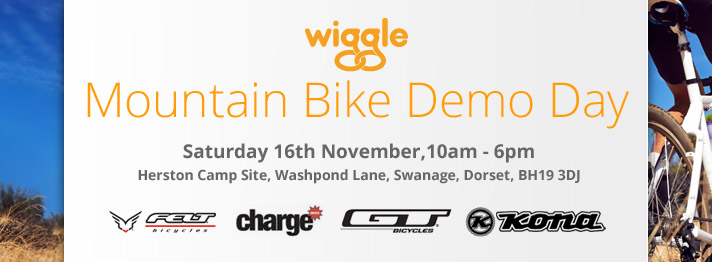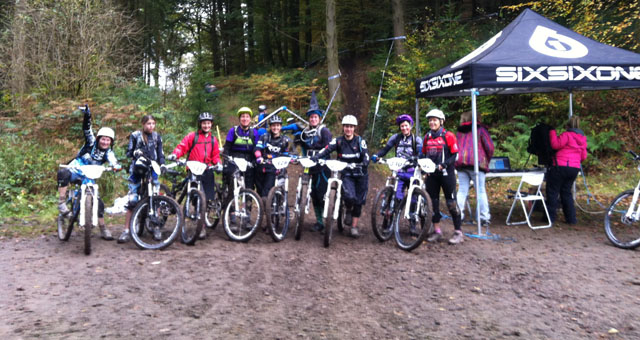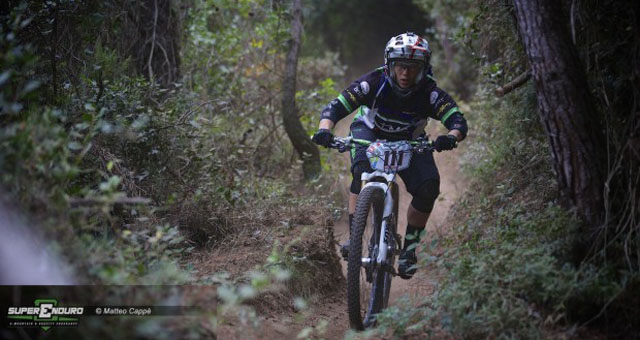Mountain biking is some of the best fun you can have on two wheels, and with trail centres up and down the country there’s lots of opportunities to get out there and ride.
Improve your skills and enjoy the trail all the more with our list of tips to help you ride better. From what to bring, what to look out for, and how to deal with technical features, it’s by no means exhaustive, but it’s a good place to start.

1. Be Prepared
Not just for the scouts, this one! There’s no more disappointing way to cut a lovely trail ride short than getting a puncture and finding out you’ve forgotten your pump.
Have all your essential emergency repair items with you every time you go out for a ride; the basics are a pump, spare inner tube, multitool, and some power links and chain tool to repair a broken chain.
That’s your bike covered; don’t forget yourself! A good waterproof for just in case, enough water, some snacks to keep your energy up, and a fully charged phone. If you’re going out on your own, let someone know where you’re headed and the route you’re taking.
2. Ask the locals
Going somewhere new, or want to find out more about what’s on offer near you? Ask in the local bike shop; the staff are likely to know the area like the back of their collective hands.
They’ll probably know which trails are looking good or bad depending on the weather conditions, what routes are suitable for different levels of rider, what’s got the type of terrain you’d like to try, and so on. Have a chat and they should be able to recommend a route to you.
A lot of shops also run social rides, so if you are new to an area or riding out for the first few times, these can be a great way of getting familiar with what’s out there.
3. Ride courteously
If you are on a blue or green trail in a trail center, you shouldn’t need to worry about anyone flying up behind you quickly.
If you are on a trail and hear someone coming up behind you, and you want to let them past or they ask to pass you, then pull over. Keep riding until you find a place that’s wide and clear enough for you to do so safely, and make sure the trail is clear before pulling out again.
If you’re approaching someone yourself, call out (in a friendly way!) to let them know you are there, and overtake when it’s safe to do so or if they pull over to let you past.
A lot of riders also call out what side they’d like to overtake on; ‘Left’ means they’re going to come through on – yes, you guessed it – your left. This happens more during races and on red and black trails.
4. Careful where you stop
Avoid congregating at the start and finish of trail sections, and blocking the entrance or exit; for a start, people can come into and out of these quite quickly, and you don’t want to be in the way.
If you stop in the middle of a section of trail, pull over to the side and try and stay off the trail itself as much as is possible.
5. Give it a go
One of the great things about graded trails at trail centers is that all of the features you encounter en route will be of a similar level, so there won’t be any tricky surprises.
Give things a go – you’ll be surprised what you can do. I’m not advocating you find an 8-foot gap jump straight off, but if you encounter a feature on the trail like a small drops or rocks, try rolling over them.
Take a bit of time to session features too. Try riding them repeatedly until you feel completely confident rolling over them. When you spot a new feature on the same trail, you’ll know you can ride something of a similar level and what it feels like.
6. Look first
If you are trying a more difficult trail, and you come across a feature you’d like to give a go, get off the bike and have a look first so you know what to expect.
Walk up to it as if you were riding it to get that view of the feature, then have a look from further down the trail looking up.
You’ll probably notice that often something that looks like a cliff when you’re rolling up to it actually looks no bigger than a kerb or short slope when viewed from the side.

7. Look ahead
One of the most common bad habits mountain bikers have – and it’s so hard not to do this – is focusing their attention on the section of trail that’s just in front of their front wheel.
This means that features further ahead can sneak up on you, catching you unawares and unprepared. As a result, you can end up panicking, stopping and not riding something that you’d probably not have any issues with.
Keep your head up, looking down the trail in front of you, so you have time to analyse, react and prepare.
8. Drop your saddle
Lowering your saddle before trying a technical section can be a real help.
Firstly, it encourages you to stand up in the pedals, and secondly it gives you room to crouch low over the bike without the saddle getting in the way.
This works because it means you ride with your elbows and knees flexed, and these act as a second set of suspension, helping you absorb the uneven terrain that you’re riding over.
9. Don’t push yourself beyond your limits
Although it’s good to give things a go, don’t feel forced into riding anything you are not comfortable with. If you don’t feel ready for it, leave it for another day.
Build up to bigger features gradually. Once you’re comfortable with a small drop, move up a size, and so on.
This also goes for things you’ve done before but just aren’t getting right on this occasion – everyone has off days. Try not to get down about it, or frustrated – chalk it up as something to work towards, or take a break and come back to it.
10. Get some coaching
Coaching can make a big difference to your riding. A good coach will give you the skills you need to ride well and deal with obstacles and trail features.
Having someone observe and feedback can also be a big help, and a coach can watch you and let you know what you’re doing right and doing wrong, if you need to change your body position, and help you break bad habits.





